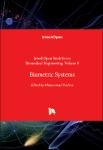Search
Author
- Adriano, Vogel (1)
- Amr Ali, Al-Maktry (1)
- Avoine, Gildas (1)
- Castro, Julio Hernandez (1)
- next >
Subject
- Open Access (2)
- 3D (1)
- biometric industry (1)
- Biometrics (1)
- next >
Has File(s)
- true (7)
Search Results
This open access book makes quantum computing more accessible than ever before. A fast-growing field at the intersection of physics and computer science, quantum computing promises to have revolutionary capabilities far surpassing “classical” computation. Getting a grip on the science behind the hype can be tough: at its heart lies quantum mechanics, whose enigmatic concepts can be imposing for the novice.
This classroom-tested textbook uses simple language, minimal math, and plenty of examples to explain the three key principles behind quantum computers: superposition, quantum measurement, and entanglement. It then goes on to explain how this quantum world opens up a whole new paradigm of computing.
The book bridges the gap between popular science articles and advanced text... |
Developing Graphics Frameworks with Python and OpenGL shows you how to create software for rendering complete three-dimensional scenes. The authors explain the foundational theoretical concepts as well as the practical programming techniques that will enable you to create your own animated and interactive computer-generated worlds. You will learn how to combine the power of OpenGL, the most widely adopted cross-platform API for GPU programming, with the accessibility and versatility of the Python programming language. Topics you will explore include generating geometric shapes, transforming objects with matrices, applying image-based textures to surfaces, and lighting your scene. Advanced sections explain how to implement procedurally generated textures, postprocessing effects, and ... |
The chapters in this open access book arise out of the EU Cost Action project Cryptacus, the objective of which was to improve and adapt existent cryptanalysis methodologies and tools to the ubiquitous computing framework. The cryptanalysis implemented lies along four axes: cryptographic models, cryptanalysis of building blocks, hardware and software security engineering, and security assessment of real-world systems.
The authors are top-class researchers in security and cryptography, and the contributions are of value to researchers and practitioners in these domains. |
A biometric system is a technological system that uses information about a person or other biological organism to identify that person. The biometric industry is rapidly changing and progressing at an astonishing speed. The main objective of this book is to provide the international community with an effective platform in the area of people identity verification and authentication from physiological and behavioral aspects. The book is also targeted to describe the latest emerging settings and requirements in biometric systems and technologies. |
Several real-world parallel applications are becoming more dynamic and long-running, demanding online (at run-time) adaptations. Stream processing is a representative scenario that computes data items arriving in real-time and where parallel executions are necessary. However, it is challenging for humans to monitor and manually self-optimize complex and long-running parallel executions continuously. Moreover, although high-level and structured parallel programming aims to facilitate parallelism, several issues still need to be addressed for improving the existing abstractions. In this paper, we extend self-adaptiveness for supporting autonomous and online changes of the parallel pattern compositions. |
In this paper, we present a new perspective of single server private information retrieval (PIR) schemes by using the notion of linear error-correcting codes. Many of the known single server schemes are based on taking linear combinations between database elements and the query elements. Using the theory of linear codes, we develop a generic framework that formalizes all such PIR schemes. This generic framework provides an appropriate setup to analyze the security of such PIR schemes. In fact, we describe some known PIR schemes with respect to this code-based framework, and present the weaknesses of the broken PIR schemes in a unified point of view. |
Let R be a finite commutative ring. The set F(R) of polynomial functions on R is a finite commutative ring with pointwise operations. Its group of units F(R)× is just the set of all unit-valued polynomial functions. We investigate polynomial permutations on R[x]/(x2)=R[α], the ring of dual numbers over R, and show that the group PR(R[α])
, consisting of those polynomial permutations of R[α] represented by polynomials in R[x], is embedded in a semidirect product of F(R)× by the group P(R) of polynomial permutations on R. In particular, when R=Fq
, we prove that PFq(Fq[α])≅P(Fq)⋉θF(Fq)×. Furthermore, we count unit-valued polynomial functions on the ring of integers modulo pn and obtain canonical representations for these functions. |







